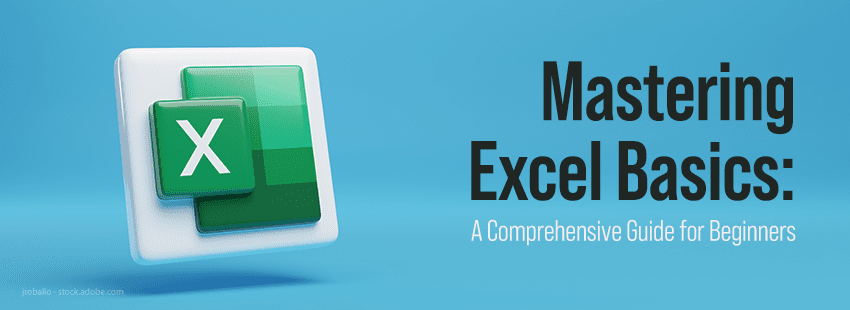Mastering Excel Charts: A Complete Information
Mastering Excel Charts: A Complete Information
Associated Articles: Mastering Excel Charts: A Complete Information
Introduction
With enthusiasm, let’s navigate by means of the intriguing subject associated to Mastering Excel Charts: A Complete Information. Let’s weave attention-grabbing data and provide recent views to the readers.
Desk of Content material
Mastering Excel Charts: A Complete Information

Microsoft Excel’s charting capabilities are a robust instrument for visualizing information, revealing traits, and speaking insights successfully. From easy bar charts to advanced 3D floor charts, Excel gives a variety of chart varieties to swimsuit numerous analytical wants. This complete information delves into the creation, customization, and efficient utilization of charts inside Excel, empowering customers to rework uncooked information into compelling visible narratives.
I. Understanding the Fundamentals of Excel Charts
Earlier than diving into the specifics, it is essential to understand the basic ideas behind efficient chart creation. A well-designed chart ought to:
- Clearly talk a particular message: What key takeaway would you like your viewers to grasp? The chart’s design ought to immediately help this message.
- Be straightforward to grasp: Keep away from cluttering the chart with pointless particulars. Preserve the design clear and easy, specializing in the important information factors.
- Be correct and truthful: The chart ought to precisely replicate the underlying information with out misrepresenting data.
- Be applicable for the info: Select a chart kind that most closely fits the kind of information you are visualizing. A pie chart is appropriate for displaying proportions, whereas a line chart is best for illustrating traits over time.
II. Selecting the Proper Chart Kind
Excel gives an unlimited array of chart varieties, every with its personal strengths and weaknesses. Choosing the suitable chart kind is paramount to efficient information visualization. This is a breakdown of some frequent chart varieties and their purposes:
-
Column Charts (Bar Charts): Splendid for evaluating values throughout completely different classes. Vertical columns symbolize information factors, making comparisons straightforward. Variations embody clustered column charts (evaluating a number of sequence inside classes) and stacked column charts (displaying the contribution of every sequence to the full).
-
Line Charts: Greatest for displaying traits over time or throughout steady information. Line charts successfully illustrate patterns and fluctuations in information. They’re significantly helpful for highlighting development, decline, or cyclical patterns.
-
Pie Charts: Appropriate for displaying the proportion of every class to the entire. Pie charts are efficient when showcasing relative contributions of various elements to a complete. Nonetheless, they turn into much less efficient with too many classes.
-
Scatter Charts (XY Charts): Used to point out the connection between two units of information. Every information level is represented as a dot on a graph, revealing correlations or patterns between the variables. They’re incessantly utilized in statistical evaluation.
-
Space Charts: Much like line charts, however the space below the road is crammed with coloration. This emphasizes the magnitude of change over time and is beneficial for highlighting cumulative totals.
-
Doughnut Charts: Much like pie charts however with the flexibility to incorporate a number of information sequence throughout the chart, permitting for extra advanced comparisons.
-
Mixture Charts: Permit for combining completely different chart varieties in a single chart. That is helpful when you might want to present completely different elements of the info concurrently, as an example, combining a column chart with a line chart.
-
Different Chart Sorts: Excel additionally gives extra specialised chart varieties like 3D charts, floor charts, radar charts, inventory charts, and extra, every designed for particular information visualization wants.
III. Making a Chart in Excel
Making a chart in Excel is an easy course of:
-
Choose the info: Spotlight the cells containing the info you wish to chart. Make sure that your information is organized in a transparent and logical method, with labels for rows and columns.
-
Insert a chart: Go to the "Insert" tab on the ribbon and choose the specified chart kind from the "Charts" group. Excel gives a preview of the chart based mostly in your chosen information.
-
Customise the chart: As soon as the chart is inserted, you’ll be able to customise varied elements, together with:
- Chart title: Give your chart a transparent and concise title that precisely displays its content material.
- Axis labels: Label the x-axis and y-axis appropriately to supply context.
- Legend: Make sure the legend clearly identifies every information sequence.
- Information labels: Add information labels to particular person information factors for enhanced readability.
- Chart model: Select a visually interesting chart model that enhances your information and total presentation.
- Chart components: Add or take away components reminiscent of gridlines, information tables, and trendlines as wanted.
-
Format the chart: Additional refine the chart’s look by adjusting font sizes, colours, and different visible attributes. Make sure the chart is visually interesting and straightforward to interpret.
IV. Superior Chart Customization Strategies
Past the essential customization choices, Excel gives superior strategies to boost your charts:
-
Including Trendlines: Spotlight traits inside your information by including trendlines to line charts or scatter charts. Excel can routinely calculate varied trendline varieties, reminiscent of linear, exponential, and polynomial.
-
Error Bars: Point out the uncertainty or variability related together with your information factors by including error bars. This provides a stage of transparency and accuracy to your visualizations.
-
Information Tables: Embody an information desk throughout the chart to supply exact numerical values alongside the visible illustration.
-
Customizing Chart Parts: Tremendous-tune the looks of particular person components, reminiscent of altering the colour of particular information sequence, adjusting marker kinds, and modifying font attributes.
-
Utilizing Chart Templates: Excel gives pre-designed chart templates that present a place to begin for creating visually interesting charts.
-
Creating Charts from PivotTables: Leverage the facility of PivotTables to create dynamic and interactive charts that routinely replace because the underlying information modifications.
V. Greatest Practices for Efficient Chart Creation
To make sure your charts are efficient and impactful:
-
Preserve it easy: Keep away from overcrowding the chart with an excessive amount of data. Concentrate on the important thing message you wish to convey.
-
Use applicable colours: Select colours which might be straightforward to tell apart and visually interesting. Keep away from utilizing too many colours, which may make the chart complicated.
-
Select applicable fonts: Use clear and legible fonts which might be straightforward to learn.
-
Keep constant formatting: Guarantee consistency in font sizes, colours, and different visible components all through the chart.
-
Label axes and information factors clearly: Present clear and concise labels for all axes and information factors.
-
Use a legend successfully: You probably have a number of information sequence, use a transparent and concise legend to establish every sequence.
-
Contemplate your viewers: Tailor the chart’s design and complexity to your viewers’s stage of understanding.
-
Proofread fastidiously: Earlier than sharing your chart, fastidiously proofread all labels, titles, and information to make sure accuracy.
VI. Conclusion:
Excel charts are an indispensable instrument for information evaluation and communication. By mastering the strategies outlined on this information, you’ll be able to successfully rework uncooked information into compelling visible narratives, revealing hidden traits, and speaking insights with readability and precision. Keep in mind that the important thing to creating efficient charts lies in understanding your information, deciding on the suitable chart kind, and using considerate design ideas to make sure your message is obvious, concise, and impactful. Steady follow and experimentation will additional refine your expertise and allow you to create refined and insightful visualizations utilizing Excel’s highly effective charting capabilities.








Closure
Thus, we hope this text has offered priceless insights into Mastering Excel Charts: A Complete Information. We hope you discover this text informative and helpful. See you in our subsequent article!